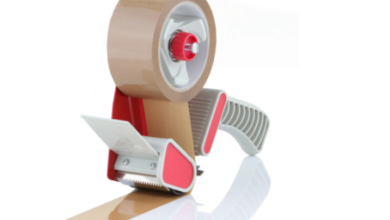Effective Wasp Nest Removal and Pest Control Solutions

Introduction to Wasp Nest Removal
Wasps can be a serious nuisance, especially during warmer months when they become more active around gardens, homes, and outdoor spaces. While wasps play an essential role in controlling other insect populations, their aggressive behavior when their nest is disturbed can pose a significant risk.
Removing a wasp nest is not an easy task, and attempting it without proper knowledge and equipment can be dangerous. That’s why professional wasp nest removal services are the safest and most effective solution. Experienced pest control specialists have the expertise and tools needed to eliminate wasps safely and prevent future infestations.
Why Professional Wasp Nest Removal Is Necessary
While some homeowners may consider DIY solutions, professional intervention is highly recommended for several reasons:
1. Safety Concerns
Wasps become highly aggressive when they sense a threat to their nest. Disturbing a wasp nest can result in multiple painful stings, which can be dangerous, especially for individuals with allergies. Trained wasp exterminators use protective gear and advanced techniques to handle the situation safely.
2. Effective Removal Methods
Experts in pest control use professional-grade insecticides, dust treatments, and specialized removal techniques to ensure that the entire nest and its occupants are eradicated. This prevents wasps from returning and rebuilding in the same location.
3. Prevention of Future Infestations
Professional wasp pest control services don’t just eliminate existing nests; they also provide advice and preventive measures to reduce the risk of future infestations. This includes sealing entry points, removing food sources, and identifying potential nesting areas.
Common Wasp Nest Removal Techniques
1. Insecticidal Sprays and Dust Treatments
One of the most common methods used by pest control professionals is applying insecticidal dust or sprays to the nest. This method effectively eliminates wasps inside the nest and prevents them from returning.
2. Physical Nest Removal
Once the wasps have been exterminated, professionals carefully remove the nest to ensure no new colonies form in the same area. This method is best handled by experts, as removing a nest prematurely can provoke surviving wasps.
3. Heat Treatment for Nest Elimination
In some cases, heat treatment is used to destroy the nest quickly and efficiently. This method works well in enclosed spaces such as attics or wall cavities.
4. Structural Modifications
If a wasp nest is located in a difficult-to-reach area, it may require partial removal of the surrounding structure. Pest control professionals assess whether this step is necessary and proceed with the safest approach.
Signs of a Wasp Infestation
1. Increased Wasp Activity
If you notice a high number of wasps flying around your property, particularly in a concentrated area, there may be a nest nearby.
2. Buzzing Sounds from Walls or Roof Spaces
Wasps often build nests in hidden locations such as attics, wall cavities, and roof spaces. If you hear a buzzing sound in these areas, it could indicate an active nest.
3. Visible Nest Structure
Wasp nests are often found under eaves, in trees, garages, sheds, or other sheltered areas. They have a papery appearance and vary in size depending on the species and time of year.
The Benefits of Professional Wasp Nest Removal
1. Minimized Risk of Stings
By hiring experts, you eliminate the danger of getting stung while trying to remove a wasp nest yourself.
2. Efficient and Long-Lasting Results
Professional treatments target the entire wasp colony, ensuring the problem is fully resolved and won’t return soon.
3. Protecting Your Property
Wasps can cause damage to walls, attics, and roofing materials if left unchecked. Removing a nest promptly prevents costly repairs.
4. Expert Knowledge and Advice
Pest control specialists can identify the root cause of infestations and provide practical solutions to prevent future occurrences.
How to Prevent Wasp Infestations
Even after professional wasp nest removal, taking preventive measures can help keep your property wasp-free.
1. Seal Entry Points
Check for and seal any gaps in walls, windows, doors, and roof spaces where wasps may enter to build their nests.
2. Keep Food and Waste Secure
Wasps are attracted to sweet and protein-rich foods. Keep garbage bins sealed, clean up food spills promptly, and cover outdoor food when dining outside.
3. Maintain Your Garden and Outdoor Areas
Trim back overgrown bushes and trees, and regularly check sheds, garages, and attics for signs of early nest formation.
4. Use Wasp Deterrents
Hanging fake wasp nests can deter real wasps from nesting nearby, as they avoid competing colonies. Additionally, citronella candles and peppermint oil sprays can help repel them.
Wasp Nest Removal Services in Chelmsford and Essex
If you’re based in Chelmsford, Brentwood, Braintree, Billericay, Southend, Benfleet, or Maldon, professional pest control services are available to help you with wasp infestations. Trained wasp exterminators offer fast, effective, and safe removal solutions tailored to your needs.
Read Also: The Ultimate Guide to Packaging Tape: Benefits, Uses, and Why You Need It
Conclusion
Wasp nest removal should always be handled with care and expertise to ensure the safety of people and pets. While wasps play an important role in the environment, their presence near homes and businesses can be hazardous. Hiring professional pest control experts ensures effective removal, reduces the risk of stings, and helps prevent future infestations.
If you suspect a wasp nest on your property, don’t take risks—contact a trusted wasp exterminator for a fast and reliable solution.




